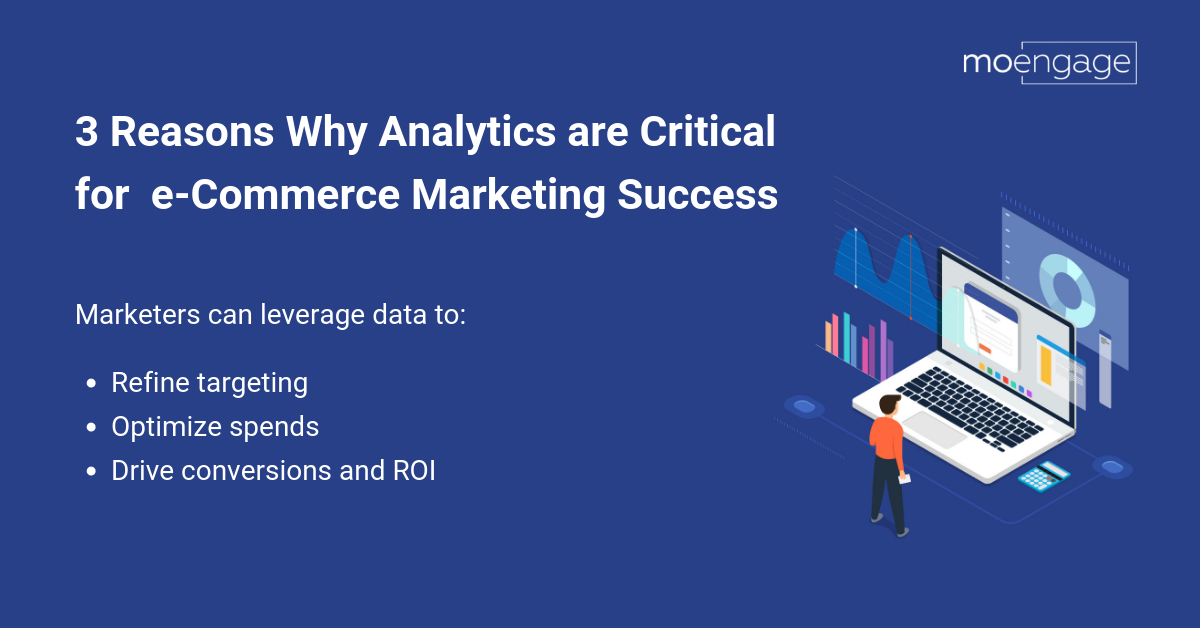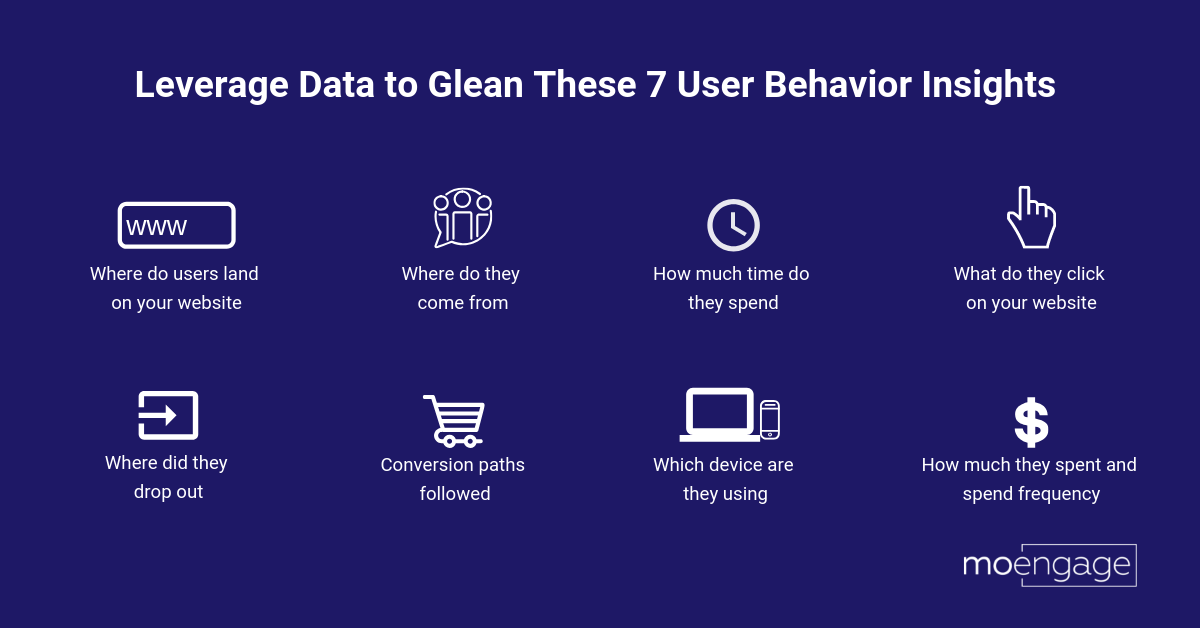How Customer Engagement Analytics Can Help Grow Your eCommerce Business

Reading Time: 5 minutes
As the year gets underway, marketers from small and mid-size e-commerce companies are busy setting up their marketing funnels and driving conversions for their websites and apps. Marketers have embraced digital marketing and taken on SEO and pay-per-click, Facebook advertising, push notifications, social media, video, SMS, and more, and you’re putting it all to work this year. It’s a busy time to be a marketer with so many channels and moving pieces! However, at this point, when marketers are juggling so many tasks and channels, analytics often takes a backseat—or gets shoved there. But it shouldn’t. In fact, shying away from customer engagement analytics could be detrimental to your business growth as an e-commerce company.

Analytics are a necessary part of any successful E-commerce marketing strategy because marketers can leverage data to refine targeting, optimize spending, and drive conversions and ROI, especially when it comes to customer engagement.
The Connection Between Analytics and Engagement
Analytics might seem like extra work that only the mathematically inclined marketer wants to take on, especially given all the pieces you’re already juggling, but research shows there’s a direct connection between analytics and customer engagement. The 2018 Data & Analytics Global Executive Study and Research Report by MIT Sloan Management Review which is summarized in a report titled “Using Analytics to Improve Customer Engagement”, finds that the more sophisticated the analytics capability at an organization, the higher the level of customer engagement:

“Analytics is driving customer engagement. Organizations that demonstrate higher levels of analytical maturity saw a marked advantage in their customer relationships. The most analytically mature organizations are twice as likely to report strong customer engagement as the least analytically mature organizations.”
In addition, the summary states that more organizations are using analytics to improve customer engagement and therefore gain a competitive advantage. And yours should probably be one of them.
How to Get Started with Customer Engagement Analytics
Analytics matters and is more essential for marketers than ever before. However, for many marketers of small to midsized e-commerce companies, the idea of analytics can be terrifying, especially if you don’t consider yourself a numbers person or analytically inclined. The whole idea can also be overwhelming if you find yourself confronted with a bunch of data and numbers and you don’t know what you’re looking at or how to interpret it.
But without customer engagement analytics, how can you know what’s working and what’s not? How can you know what to replicate and what to fix or change? How can you deepen customer engagement if you can’t measure it?
We’re going to try and take away some of the scare factors and give you a brief rundown of customer engagement analytics, why you should care, and what to look for.
Let’s start with where to look. As an e-commerce marketer, you’re going to have several ways to access data because of the different channels you’re using. First, figure out where your data sits and the tools you have for analyzing that data. At the very least, you’re probably going to have Google Analytics, data from your Facebook ads, dashboards for your email marketing and push notifications, and possibly more.

From your data, you should be able to glean all kinds of insight, including:
- Where do people land on your website, i.e. the first page they go to and how they got there
- Where they are coming from
- How much time do they spend on each page
- What they click on—and how long they stay after clicking through
- Where they drop out
- The path followed by those who convert
- Which device they’re using
- How quickly your pages load
- How much they spent and spent frequency
And that’s just for your apps and websites! Your analytics for your pay-per-click ads, email marketing, and social media are all going to offer different types of information—but in a way, it’s all kind of the same because the insight we’ve outlined above is all essentially measuring customer engagement.
Bonus Content
|
And when you’re measuring customer engagement, the insights you gain can help you:
- View the buyer journey funnel and improve conversions
- Track KPIs and analyze trends
- Compare performance across campaigns
- Identify your most and least engaged user groups
- Understand your cohorts and drive stickiness
- Plug in a visualization tool for custom analytics
Paying attention to analytics over time also gives you metrics to benchmark against. When you’re first starting out, a 40% bounce rate might seem great—or horrible. Over time, you can make changes and see if you can “move the needle” on that bounce rate, and only then will you know if it’s a good number or a bad one.
The Analytics Learning Curve
There is a learning curve with analytics. Rarely are numbers cut and dry. For example, you must understand context too, and what is driving user behavior. Are they abandoning a shopping cart because the process is confusing or because the shipping cost is so high? Are they clicking through to the wrong page because the wording is odd on the other page? Are they staying on one page for an unusually long time because the content is that engaging or because they are trying to figure out where to go next?
Nor can you always take analytics at face value. If a huge number of consumers went to your landing page, you might consider that a big success. But if only a tiny percentage converted, you might have a disconnect between what you offered and what they actually found. And that kind of disconnect only leads to disengagement.

This analytics helps in the short term, but it can also help you make informed long-term strategic decisions. Is growth enough that you can start to scale? Should you get more aggressive with your marketing? Is one channel working better than another, so you should divert more resources to that channel?
Admittedly, using customer engagement analytics is a little more complicated than looking at some numbers and knowing immediately how to react to them. But without measuring, learning from, and reacting to analytics, how can you hope to deepen customer engagement in the year ahead?
| Here’s What You Can Read Next |








